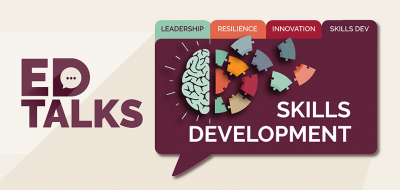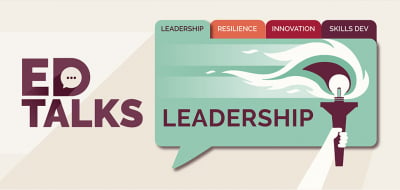Ever heard of a company called Amazon? Of course you have! The American multinational conglomerate has disrupted the way millions of consumers across the world shop online. Its founder, Jeff Bezos, created Amazon as an online marketplace for books in 1994 but, through strategy development and innovative practices, the company is now the world’s largest e-commerce enterprise. So, how can strategic thinking help you similarly ‘level up’?
What are the benefits of strategic thinking?
- It’ll instill a systems thinking approach
- It’ll teach you to examine how all the parts of the whole are connected – understanding the relationship between these is key to improved decision-making
- It’ll empower you to think more creatively, but always with a business goal in mind
- It’ll create a strong sense of client-centricity
It’s easy to dismiss strategy and strategic thinking as the latest buzzwords from the lexicon of the Fourth Industrial Revolution (4IR). Yet, MBA programmes and business schools place an emphasis on strategic thinking as a valuable skill, and many employers highlight it as a must-have for senior management.
But what exactly is strategic thinking?
Although “strategy”, “strategic thinking” and “strategist” are bandied across LinkedIn profiles and job descriptions, many people don’t fully understand the role of strategy. Henry Innis, the chief strategy officer at US marketing firm Mutiny, describes strategists as “professional opportunists”––they search for the best opportunity, create a plan that produces positive outcomes towards their goal and direct the necessary resources to ensure the plan is impactful and effective.
Businessphrases.net defines strategic thinking as the ability to produce an effective plan to help resolve a problem or achieve a goal. And while many people view this as a valuable leadership skill, strategic thinking should be happening at every level within an organisation and not just amongst senior executives, says Harvard Business Review.
Ultimately, every organisation needs innovative individuals who have mastered the use of smart tools and techniques to drive its strategic goals forward for better business performance. Strategy development and implementation take a very specific toolkit – you need to be able to create compelling agendas to drive workplace change, utilise tools to hone seamless collaboration at operations level, understand the strategic leadership requirements for implementation, and proactively perceive and mitigate any risks to strategy execution.
Strategy = Value
Indeed, strategic thinking can be the difference between a successful business and an unsuccessful one––or whether you land a promotion or not. Why? Anticipating shifts in the marketplace, identifying opportunities, and proposing and implementing a plan are the core facets of strategic thinking––and necessary for companies that are consistently pushing innovation, improving their products and services, and evaluating their performance against their competitors.
No matter the industry or size of a business––from a small corner store to a world-famous landmark or brand––strategic thinking is a valuable and required skill. The Louvre in Paris, France, for example, has undertaken various innovative approaches to increase the number of visitors to the museum, including allowing multi-award-winning superstars Beyoncé and Jay-Z to film the music video for their hit song “Apes**t” in its hallowed halls. According to the Musée du Louvre press room, the number of visitors increased by 25% from 2017 to 2018 after the video aired and, in 2019, the museum launched free, festive events on the first Saturday of each month. And believe us, these innovative ideas were whipped up by a strategic thinker.
How to think strategically
It may sound daunting but strategic thinking doesn’t need to be a chore. You may already possess some of these capabilities needed in strategic thinking but it’s not too late to learn the rest:
- Map it out. Clearly outline your objectives and develop a plan of action and timeline – a business canvas – but remain flexible if things don’t go according to your schedule.
- Look for trends. No matter your role, when thinking about strategy, it’s important you understand the industry, trends and business drivers, and how these affect your end goal.
- Question everything. The most strategic thinkers amongst us are often the people that can take a step back and look at information from different points of view. Never accept at face value – always ask why. Critical thinking is key.
- Train your brain. Strategic thinkers are known for their ability to use both their left (logical) and right (creative) sides of their mind. The value of this means you’ll be able to reflect on a challenge from different viewpoints.
How to show off your strategic thinking abilities
You may already be thinking strategically yet you’re unable to express your ideas to your boss or peers. Use these tips to demonstrate your skills in strategic thinking, which can ultimately help you land the promotion you’re after!
- Add structure to your speech. Essentially, this helps your audience focus on the message you want to convey. You can do this by grouping logical points together, providing an overview of the topics you’d like to discuss and giving the answer first before going into the explanation.
- Take time to think. Block off time in your calendar to reflect on concerns or challenges and consider various approaches. By prioritising “thinking time”, you’re allowing yourself to move away from a busy day to truly have time to ponder a problem.
- ‘Stay woke’. By listening, hearing and understanding what you read and observe, you’ll be able to recognise opportunities for yourself, your colleagues and your company. Talk to people with different viewpoints to your own – it’s essential to pull the right people in to challenge your innate biases and bring another perspective to the table.
- Turn ideas into actions. Look beyond your job description to find innovative ways to simplify processes, implement change or show you understand the vision and goals of your company beyond your function. Ultimately, strategy implementation can only be successful if the strategy poses a solve to a collective challenge people face. To evoke change, you need buy-in, and that only happens when you can ‘sell’ the value of your idea to others.
After strategic thinking comes strategy execution. That takes a complementary skills toolkit, which will see you rallying the right people around the compelling agendas you create to drive real change in your world of work. The ability to do so will make you an invaluable asset to your team – it’s not just about how you think – it’s equally about how you influence.
Learn to be a leader in strategic execution with USB-ED’s Master in Strategy Execution course. This will show you how to hone and leverage your strategic thinking skills to the next level, by being able to successfully execute strategic business goals.
written by





